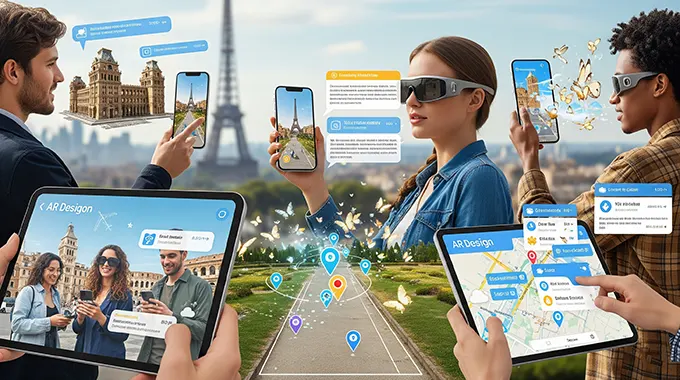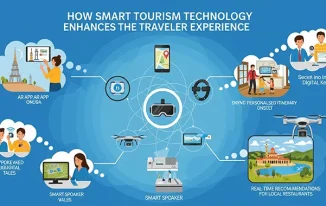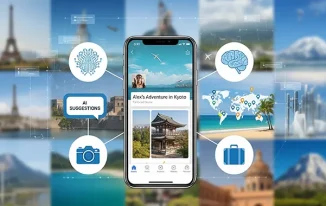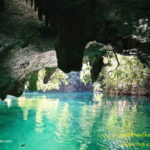The travel industry is undergoing a technological revolution, with Augmented Reality (AR) emerging as a key player in transforming how travelers explore destinations and engage with content. Innovative travel media platforms using augmented reality (AR) are reshaping the travel experience by blending the digital world with the physical environment, offering immersive, interactive, and personalized journeys. This article explores the rise of these cutting-edge platforms and how they are changing the face of travel media.
What is Augmented Reality (AR) in Travel Media?
Augmented Reality (AR) overlays digital information—such as images, sounds, and text—onto the real world via smartphones, tablets, or AR glasses. In travel media, AR enriches the user experience by providing real-time, contextual content that enhances destination discovery, storytelling, and navigation.
Why Are AR-Based Travel Media Platforms Innovative?
Traditional travel media, like brochures, websites, and videos, are often static and one-dimensional. In contrast, AR-enabled platforms offer:
- Immersive experiences: Users interact with 3D models and virtual guides.
- Contextual information: Historical facts, reviews, and tips appear just when needed.
- Personalization: Content adapts to the user’s location, preferences, and behavior.
- Enhanced engagement: Gamification and interactive tours maintain traveler interest.
- Bridging physical and digital: AR transforms landmarks and destinations into dynamic learning environments.
Examples of Innovative Travel Media Platforms Using AR
1. Google Arts & Culture
Google Arts & Culture integrates AR to showcase world heritage sites and museums with virtual tours and 3D reconstructions. Travelers can use AR to visualize ancient ruins or famous artworks in their current space, deepening their understanding and appreciation before or during the visit.
2. Yelp AR
Yelp’s AR feature lets users point their smartphone cameras around them to see restaurant ratings, reviews, and operating hours overlaid on physical storefronts in real time. This fusion of social travel media and AR simplifies decision-making while exploring new cities.
3. SeekXR
SeekXR is a platform specializing in creating AR travel content such as interactive city guides, local culture stories, and immersive historical overlays. Users can experience travel documentaries with AR elements that bring stories to life in vivid detail.
4. Wikitude
Wikitude is an AR development platform that powers several travel apps providing location-based AR experiences. Tourists can discover hidden spots, translate signs, and receive real-time navigation assistance, all via AR-enhanced media.
5. National Geographic AR Experiences
National Geographic leverages AR to offer immersive content related to wildlife, geography, and culture. Their AR travel media allows users to explore distant lands and animals virtually, sparking curiosity and inspiring travel.
Benefits of Using AR in Travel Media Platforms
- Enhanced Learning: AR transforms sightseeing into an educational adventure by providing rich contextual information.
- Increased Accessibility: Virtually visit places that might be difficult due to distance, health, or cost.
- Improved Planning: Preview destinations interactively before booking trips.
- Greater Engagement: Interactive content keeps travelers interested and motivated to explore.
- Social Sharing: AR experiences encourage users to share unique stories on social media, promoting travel brands organically.
Future Trends in AR Travel Media Platforms
- Wearable AR Devices: Smart glasses will allow for hands-free, seamless AR travel experiences.
- AI Integration: Combining AI with AR to offer hyper-personalized travel content and recommendations.
- AR in Virtual Tourism: Creating fully immersive travel experiences for those unable to travel physically.
- Sustainability Education: Using AR to raise awareness about environmental impacts at travel destinations.
Innovative travel media platforms using augmented reality (AR) are revolutionizing the way people engage with travel content. By blending the real and digital worlds, these platforms offer immersive, personalized, and socially shareable experiences that enrich every stage of the traveler’s journey—from research and planning to actual exploration.
As AR technology continues to evolve and integrate with AI and wearable devices, the future of travel media promises to be even more dynamic, interactive, and accessible. Embracing these innovations not only enhances the travel experience but also opens exciting possibilities for the industry to connect travelers with the world’s wonders like never before.













